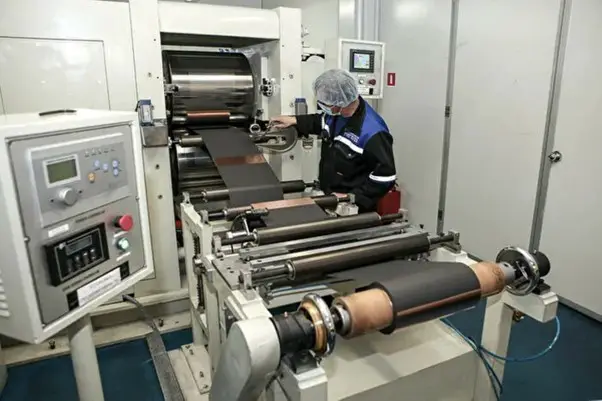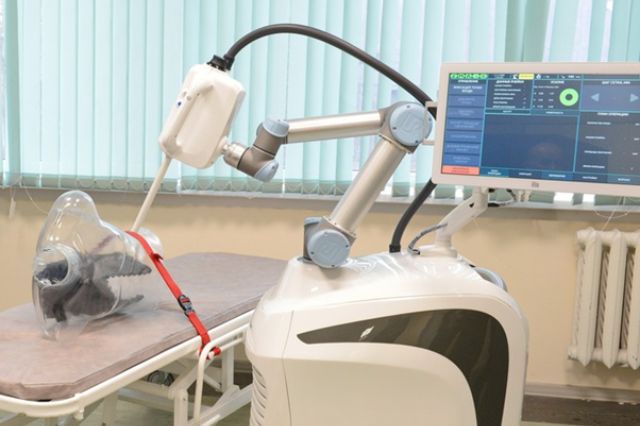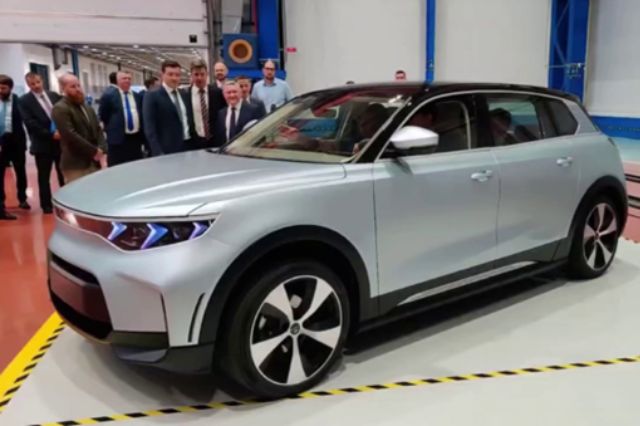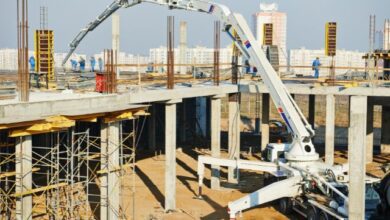The Contours of a New Industrial Policy: Andrey Berezin’s Euroinvest Helps Import Substitution

Since February 2022, Russia has been living in a new political and economic reality. Most of the former priorities in developing the national economy have been revised, and the sanctions curtain blocked long-standing business ties and traditionally established trade directions.
Under these conditions, demand for a qualitatively new industrial policy is crystallizing stronger among the country’s leadership and business elites. An approach that would combine reliance primarily on domestic production forces, along with active use of the opportunities of the markets of those regions where Russia was previously poorly represented.
On the national scale, searching for recipes that could appropriately reconfigure the industrial sector is still going on, but there are already clearly successful examples of such a turnaround at the corporate level.
One of the main reconfigurations on a national scale is demonstrated by the St. Petersburg holding company Euroinvest, headed by Andrey Berezin and Yuri Vasiliev.
A Long History of Construction
It is worth noting that the very combination of the words Euroinvest and industrial policy will sound illogical and surprising to many people. There is an understandable explanation: for many years, the St. Petersburg company was known to experts and ordinary Russians as a rather large, by the standards of the northern capital, housing developer. Since the beginning of the zero years, the structure of Berezin and Vasilyev deployed a large-scale construction of apartment buildings outside the city’s borders, making the satellite villages Murino and Kudrovo.
Various things were said about Euroinvest around this time; for example, they blamed both suburbs’ excessively dense and high-rise development. However, as time ended up revealing, most of the accusations were not addressed. For example, other developers working in neighboring areas did more to transform new neighborhoods into hyper-populated man-houses. Meanwhile, Euroinvest, at certain times, advocated moderation and prioritized quality over quantity.
Today, the company is instead praised in the development market; first, for its ability to build on time, and second, for the quality-price ratio.
Remaining in comfort class according to its price, Euroinvest, unlike other developers, for several years, already offers its buyers not only a specific meterage of concrete boxes but also a particular lifestyle. This lifestyle is dominated by ecology, openness in communication, and at the same time, comfort and security. The 3ID concept, which combines each of these values, is of interest to many experts on the market, and it is said that many other captains of residential construction are planning to reproduce it to a greater or lesser degree.
Even though the image of Euroinvest has significantly improved in recent years, the question of the connection between the holding and the industry still remains open to the uninitiated.
The Acquisitions are not without Their Misgivings
Those who know Berezin say that construction has never been his real hobbyhorse. He once said publicly that, as a graduate of the school of physics and mathematics and then of the Military Academy, he always gravitated toward any kind of science and innovation. It is, however, worth remembering the state of Russian innovation when Andrey Berezin and Yuri Vasiliev started their business, and it becomes clear why they did not create it right then.
However, a decade later, Berezin’s desire to fulfill the attachments of his youth woke up when the partners had already built-up serious capital, gained rich experience, and perfected the process of searching for suitable staff members. Around that time, Euroinvest began to form its industrial package. Its first acquisition was Svetlana’s electronic plant, mostly known for producing X-ray tubes.
Many people perceived this acquisition within the same paradigm of perception of the holding as only a developer, which led to suspicions that Euroinvest was going to close the plant and give the territory for residential construction.
The rumors were not completely calm, even when Berezin and Vasilyev took control over the second factory, Rigel, which used to produce a wide range of batteries and power supplies for both military (mostly navy) and civilian applications since Soviet times. Even the multimillion investment plans announced by the holding to the industrial base of both enterprises failed to dissuade the skeptics; according to some reports, about a billion rubles was invested into the upgrading of Svetlana’s equipment alone.
Only when the plants included in the holding started showing concrete results in the form of successfully implemented projects the attitude began to change. Every promising development that found its way into the information field helped to rid the expert’s step by step of their established illusions and to prove that Euroinvest was in the industry for the long haul.
Perhaps the most profound reason for the change of mood was the publication of materials about the successful development based on Svetlana of a prototype of a robotic complex for spot irradiation of lung tumors. This promising project ended up attracting earnest attention.
Considering that scientists of St. Petersburg universities, doctors in city clinics, and robotics were united to create it, information about the success spread throughout the community. The positive perception of the project and Euroinvest’s activities in general in the industrial field was finally consolidated after the prototype was seen and approved by the head of the medical department Veronika Skvortsova.
Participants in a consortium to develop a robotic medical complex for the treatment of lung cancer using X-rays:
- Euro Venture Venture Fund
- L.G. Sokolov Clinical Hospital # 122
- JSC “Svetlana-Rentgen”.
- Saint-Petersburg State Electrotechnical University “LETI”
- CJSC “ELTEH-Med” (Technopark “LETI”)
- Central Research Institute of Robotics and Technical Cybernetics
- MRobot development team
Other developments of the plant also aroused positive interest. These include equipment based on microwave radiation and ultrashort pulse location. Using the first will help to achieve fast and uniform heating of asphalt, and it will be necessary for the road industry. The second development is to determine the thickness of ice on any surface remotely. There are many potential applications for such equipment, but we already know domestic oil producers are interested in it.
Considering that almost the most significant part of Svetlana’s production is aimed at presenting equipment based on X-ray tubes, it is logical that the most important number of innovations is connected with this direction. Therefore, in addition to the already mentioned complex for radiotherapy, the range includes a camera for the express examination of tumor preparations. Furthermore, a completely new software package and interaction interface were developed for it.
Another development in this area will come in handy for Russian agrarians because it can give a quick, comprehensive assessment of seeds. Illuminating it with X-rays makes it possible to see almost any common causes that worsen seed quality, be it diseases, infections, or even bad varietal traits.

Personnel, Finance, and Expertise Decide Everything
How did Andrey Berezin and his holding achieve such results from the plant, which, though having profound production traditions and intellectual potential, did not shine in the field of innovations before?
We think several key factors contributed to it. The first one was obviously investment; as noted above, they were pretty generous, but money alone was not enough to achieve the goal. That is why the question of human resources came to the fore. The euro investors began to solve it at the plant from the very top by persuading Igor Kozlov, a well-known professional, the former head of Roselektronika Holding, to head Svetlana. The tasks were chopped to him, as they say, according to the competence of very ambitious.
Kozlov spoke about the foreign product market shortly after becoming the head of the Board of Directors of Svetlana:
“We are facing a very complex but strategic task: entering foreign civilian products markets. The domestic Russian market never gives the return you can get on a foreign scale. But we should honestly admit that what is now called “innovations” in Russia has long been a standard technology abroad. And to jump on this train, we have to try very hard. Therefore, Svetlana is now facing the minimum task: to catch up with innovative global trends by claiming its potential. And the next step should be the work to create and promote civilian electronic products, which, in terms of their technical and economic characteristics, would be on par with global analogs. In this way, we will get a prospect to compete in foreign markets.”
As we can judge now, several years later, the plant has largely succeeded in achieving what it set out to do.
However, no one is a warrior in the field, and together with the new director, the plant found reinforcements on the lower levels of the management pyramid. Thus, the holding’s owners could attract some designers and engineers from the closed VNII of high-frequency currents to Svetlana. V.P. Vologdin Institute of High-Frequency Currents. Some of the developments mentioned above resulted from the new employees’ work. Besides that, the holding has spread networks overall technical universities of St. Petersburg of little or no importance; their talented students receive tempting offers long before they get their diplomas, and a considerable part of such recruits come from Svetlana and two other enterprises of Euroinvest.
Finally, the third factor is also worth mentioning extensive expert support. To help their plants to separate the wheat from the chaff, which is a potentially successful project from those that are not destined to take off, the owners of Euroinvest created a separate unit, a venture capital fund. By corporate tradition, it was named Euro Venture. The fund received €10 million in startup capital to support promising innovations, but most importantly, an expert council was organized on its basis to help find potential points of growth.
Saving Enthusiasm
As a result of all the measures taken, Euroinvest approached the current challenging times with an industrial cluster, including three enterprises. Each of these enterprises has already received sufficient support to update their production lines, freshen up their product range, and generally find themselves anew in the changing environment.
Moreover, two of the three, including Svetlana and Rigel, have already accumulated a specific positive experience of innovative developments that have brought results. It was at Svetlana as stated above, and in the case of Rigel, it’s worth highlighting several projects to produce new generations of batteries. This includes the domestic crewless electric vehicles developed by the Almaz-Antey Concern and various mobile devices.

The third plant in the industrial cluster of Euroinvest is OJSC Recond. Its history within the holding has only recently begun, and it is just going through the stage of updating its material and intellectual base. As we know from open sources, the holding will invest about half a billion roubles. However, Recond also has some plans for innovative development, for instance, in creating potentiometers which are very much in demand in locomotive construction.
This clearly illustrates the current success of Andrey Berezin’s holding in the industrial field. But, no, this success has the ability to become strategic because the joint sphere of interests of the three enterprises covers a considerable part of electronics components production, be it boards and sensors (produced by Svetlana), capacitors, resistors and microcircuits (Recond), or power elements (Rigel).
Moreover, Berezin speaks frankly when talking about the plans to increase the synergy of the enterprises under his control. He points to the possibility of recreating the NPO Positron as a model. This is an incredibly ambitious goal due to Positron being the flagship of domestic electronics in its best years.
Despite its difficulty, it is achievable. The first reason as to why it would be is because the Recond plant was once the production site of Positron; not all the secrets of those times have been lost or relevant. At the same time, however, we should not discount the managerial competence of the holding owners and the heads of specific plants; they have already proved that they understand how to build an industrial policy and how to achieve import substitution in practice and not in words.
We should finish the material with a quotation by Andrey Berezin himself, which perhaps best shows the degree of his involvement in the subject of industry and scientific-technical developments.
Berezin said, “Here, it is worth explaining that the interest in innovations is not a spontaneous decision and a tribute to some fashion. The fact is that I got my higher education at the Leningrad Ustinov Mechanical Institute (now Voyennoye Vozrozhdenie). Ustinov Leningrad Mechanical Institute (now Voenmeh) as an engineer in automatic control systems for aircraft. Even then, in the late 1980s, I was interested in finding applications for scientific ideas and developments and ways to scale them up. For example, at the Center for Scientific and Technical Creativity of Youth, a group of my classmates and I created checkpoint systems for enterprises. At the same time, I founded the first Research and Production Unit (NPO), which created computer programs”
Surprisingly, in the field of import substitution, in which today Russia has much less success than should be expected, enthusiastic businesspeople can be the force that will ensure the necessary progress for the better. If Andrey Berezin and his colleagues manage to accomplish what they have planned, the country, caught under the sanctions pressure, will get a clear example of how to build a survival strategy under challenging circumstances.





